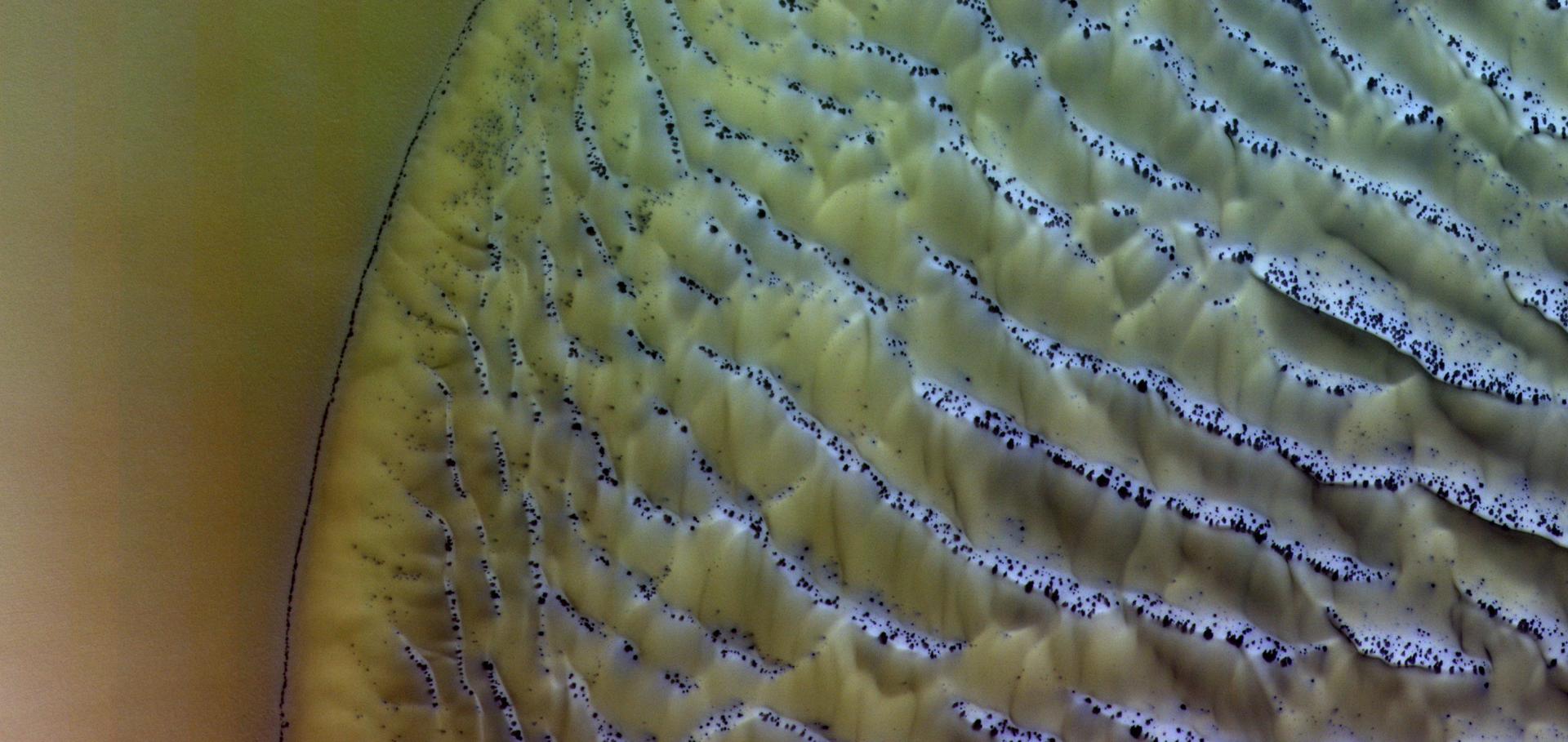First observation of the magnetic dipole CO2 main isotopologue absorption band at 3.3 µm in the atmosphere of Mars by the ExoMars Trace Gas Orbiter ACS instrument
Astronomy & Astrophysics EDP Sciences (2020)
Stormy water on Mars: the distribution and saturation of atmospheric water during the dusty season
Science American Association for the Advancement of Science (2020)
Abstract:
The loss of water from Mars to space is thought to result from the transport of water to the upper atmosphere, where it is dissociated to hydrogen and escapes the planet. Recent observations have suggested large, rapid seasonal intrusions of water into the upper atmosphere, boosting the hydrogen abundance. We use the Atmospheric Chemistry Suite on the ExoMars Trace Gas Orbiter to characterize the water distribution by altitude. Water profiles during the 2018–2019 southern spring and summer stormy seasons show that high-altitude water is preferentially supplied close to perihelion, and supersaturation occurs even when clouds are present. This implies that the potential for water to escape from Mars is higher than previously thought.The vertical structure of CO in the Martian atmosphere from the ExoMars Trace Gas Orbiter
University of Oxford (2020)
Abstract:
CO VMR vertical profiles for the atmosphere of Mars derived from the mid infrared channel of the Atmospheric Chemistry Suite (ACS MIR) on the ExoMars Trace Gas Orbiter (TGO) from the first thee months of science operations. Data archived in support of the manuscript titled The vertical structure of CO in the Martian atmosphere from the ExoMars Trace Gas Orbiter published in Nature Geoscience.Validation of the HITRAN 2016 and GEISA 2015 line lists using ACE-FTS solar occultation observations
Journal of Quantitative Spectroscopy and Radiative Transfer Elsevier 236 (2019) 106590
Oxygen isotopic ratios in Martian water vapour observed by ACS MIR on board the ExoMars Trace Gas Orbiter
Astronomy and Astrophysics EDP Sciences 630 (2019) A91


